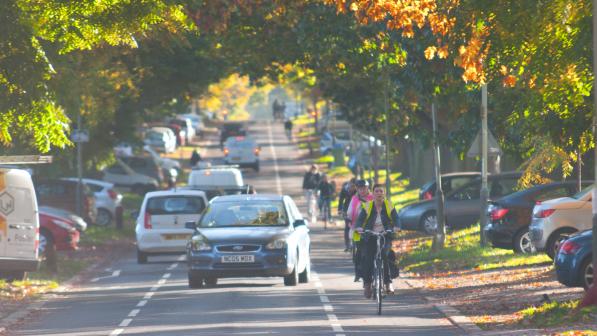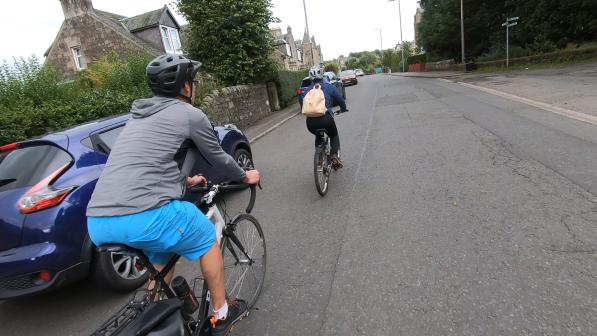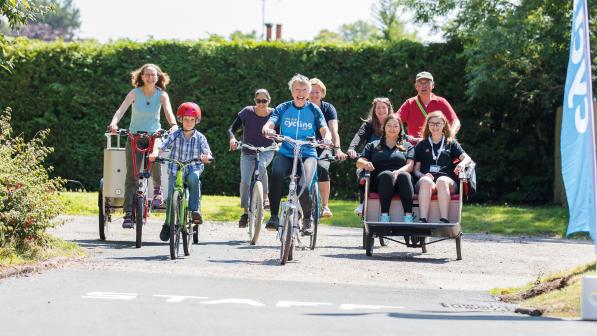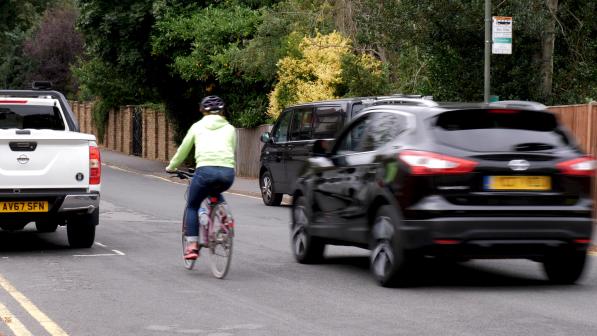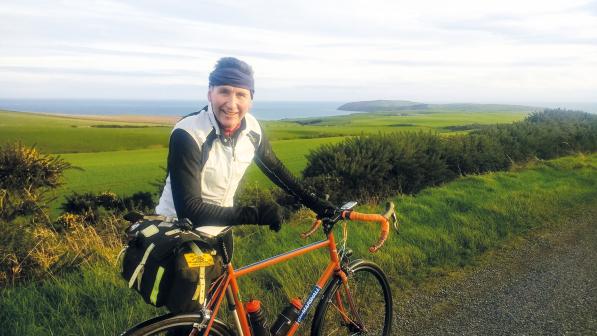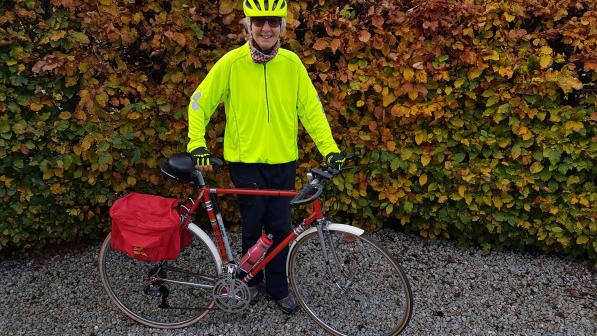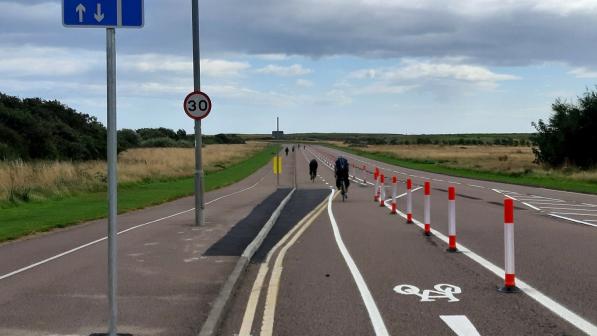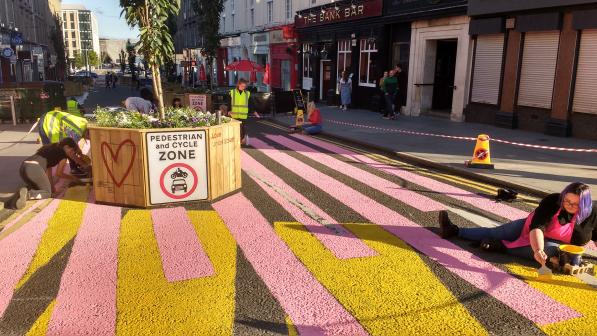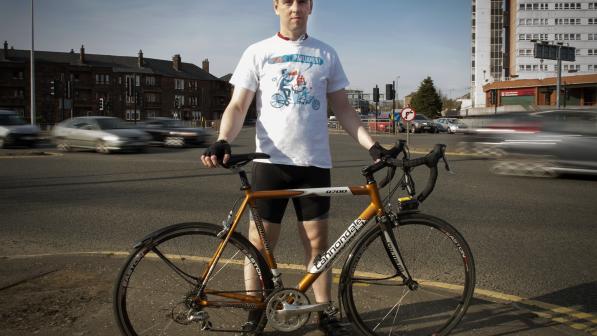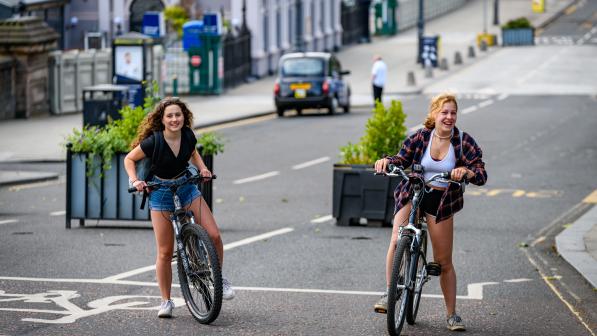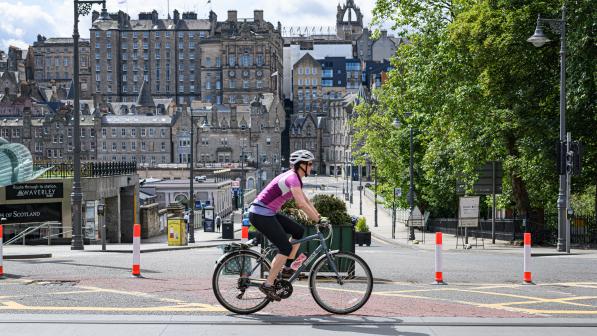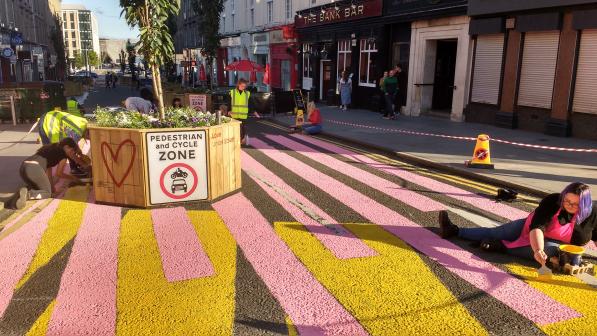Help make our roads safer: Scotland’s Road Safety Framework

If you are a regular cyclist, I’ll bet my bottom dollar that you have a tale to tell about road safety – or lack of it! Thankfully, the worst that’s happened to me on the road is a car dooring on the way to work and a taxi driver in Berwick-upon-Tweed who didn’t look at a roundabout and mangled my back wheel.
Like most cyclists I’ve had too many experiences of close passes and impatient drivers making me feel unsafe. I’ve had to negotiate potholes that rattle my bones and play ‘guess the worn out road markings’ in the dark. Cycling in busy traffic can feel horribly like being a novice player in Mario Kart – but with real life danger and consequences.
Arguably the biggest road safety challenge comes from the way our roads - especially junctions - have historically been designed (with motor vehicles in mind rather than people travelling at a slower pace).
As hard infrastructure, it is very difficult to address and change. Instead, as cyclists we become accustomed to the way things are and adapt. I changed a previous commuting route to avoid Glasgow’s Charing Cross after too many close calls.
It shouldn’t have to be this way. Everyone should be confident that they will be safe if they choose to walk, wheel or cycle in Scotland.
Unfortunately, a survey last year found 68% of people agree that ‘Not feeling safe on roads’ is a barrier to cycling. For new or returning cyclists, the combination of busy roads and poor road design combine to act as a barrier to gaining confidence.
The same survey asked what would motivate them to cycle more, and found that 81% of people said more cycling infrastructure and 72% wanted ‘Less/slower traffic on the roads’. The question is: how can this, and other aspects of road safety be improved, so more of us can make short everyday journeys by bike and enjoy the benefits?
Everyone should be confident that they will be safe if they choose to walk, wheel or cycle in Scotland.
Jim Densham, campaigns and policy manager for Scotland, Cycling UK
The Scottish Government are currently consulting on a new Road Safety Framework. Their ambition is ‘vision zero’ – no deaths on the road by 2050, and to have the best road safety record in the world by 2030. It’s a laudable but ambitious goal, and one which will need considerable effort to achieve.
Scotland’s road casualty statistics for 2019 - published this week show that tragically, ten people died whilst riding pedal cycles – up from six deaths in 2018. There were 572 reported cyclist casualties, of which 182 were seriously injured. Over the past ten years, the trend in cyclists injured on Scotland’s roads is down, but the number of deaths and serious injuries has increased. This is very worrying and shows the need for renewed efforts to tackle road safety.
We will be responding to the consultation before the deadline of 1 December, however we want to help you to respond, too. The more voices pushing for change, the better our chance of making the roads safer. To help, we have analysed the new framework and created a summary guide to follow if you wish.
The framework takes a ‘Safe System Approach’ to meet the objectives of safe roads & roadsides, safe road users, safe vehicles, safe speeds, and post-crash response. The idea of the safe system is that, at all times in everyday road use, should one of these ‘pillars’ fail, the others will be strong enough to prevent loss of life – a kind of safety net. For example, if a road can’t be redesigned, the speed limits should be set at a level which prevent accidents and deaths.
Our guide explains what improvement to the framework we will be calling for, to strengthen the pillars. Two key priorities are:
- Enforcement – We need better enforcement of the rules of the road which are there to protect cyclists. This is not just enforcement of speed limits, but dangerous and inconsiderate driving behaviours, such as close passing. As part of this we want Police Scotland to set up a single easy to use camera footage submission system, so people can upload helmetcam and dashcam footage to help the police, support enforcement and improve driving behaviours.
- Engineering – We want the framework to include a specific strategic action to design, construct and maintain roads, roadsides and junctions in order to make them safer. Many road junctions are a danger to those walking, cycling and wheeling, and need to be redesigned to the highest standards. Potholes, worn road markings, and poor pavement surfaces also make active travel difficult and dangerous.
Lockdown showed us that when the roads are quiet, people will cycle more. To help more people to cycle, government must actively redesign roads to make them safer. The priority must be people, not cars.
This must include reapportioning road space so that there’s more safe space for cycling. At the same time we need to make sure that roads are well policed to create a deterrent for bad driving and make people safer, and feel safer.
Now is your chance to have your say on road safety in Scotland. Use our guide to help answer the questions, but do tell government your own experiences and what you want, to ensure you’re safe on the roads.
